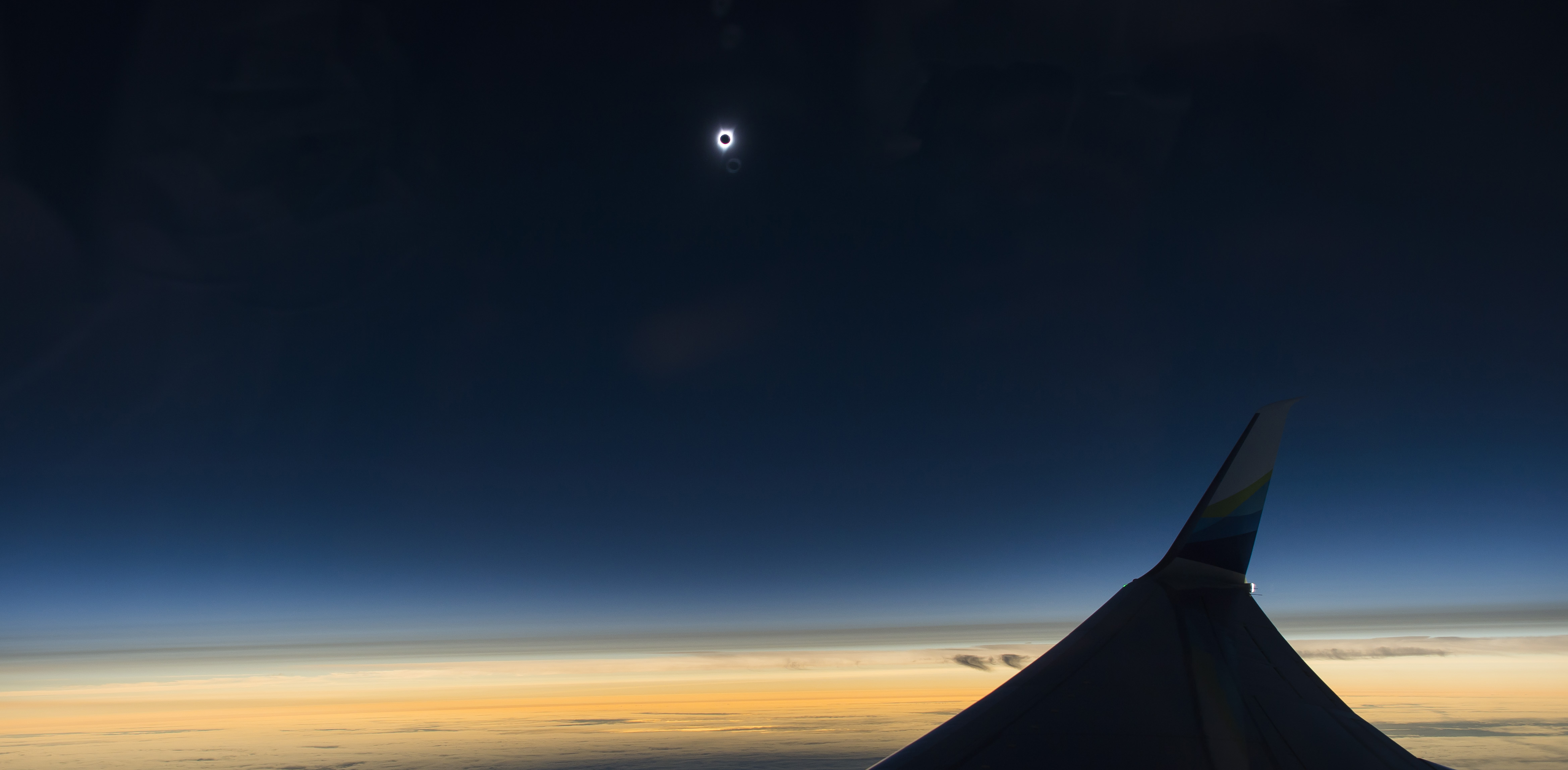Threading the celestial needle: Catching the Great American Eclipse at 35,000 feet
Share
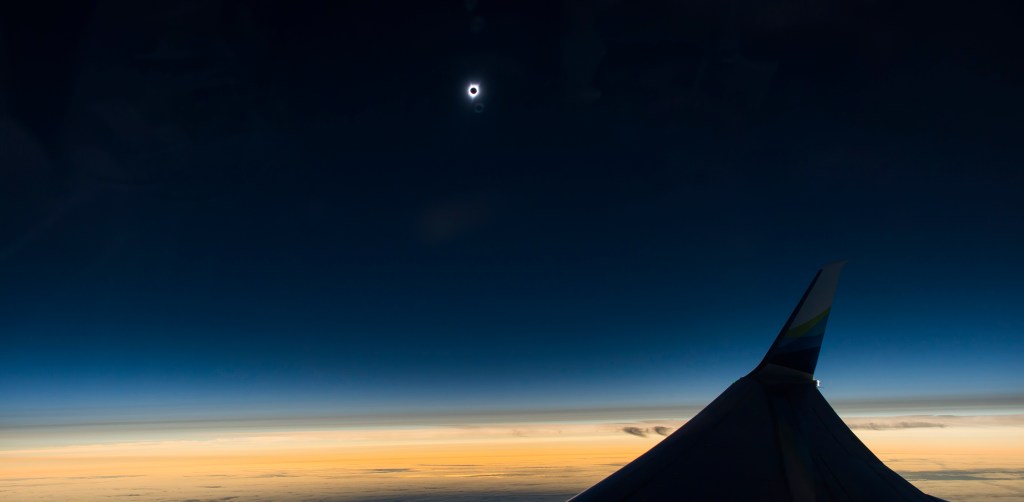
The moment of totality as viewed from Alaska Airlines Great American Eclipse Flight out of Portland, Oregon on August 21, 2017. Photos by Ingrid Barrentine, Alaska Airlines.
There’s nothing Alaska Airlines pilots like more than a challenge. As a company that started out flying between remote airfields deep in the Alaskan “bush,” safely navigating where other airlines can’t is in Alaska’s blood.
So, for Alaska, putting a flight in the path of the Great American Eclipse wasn’t really a question of if, but how.
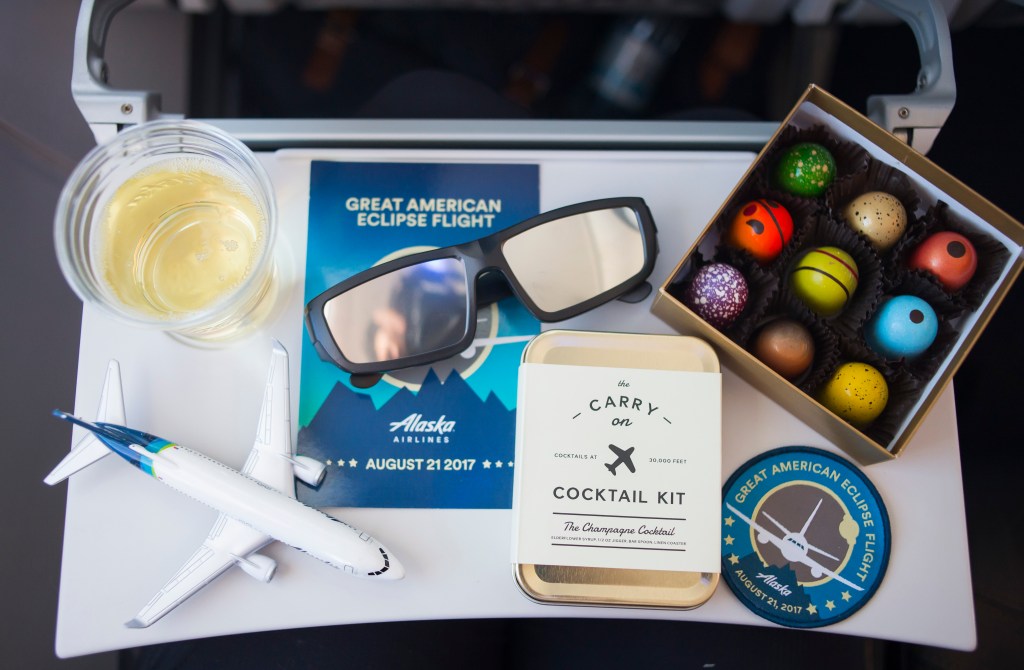
Total solar eclipses aren’t rare – they come around every 16 months or so. Being lucky enough to get in their path is the hard part. Diehard eclipse chasers, called “umbraphiles,” go to drastic lengths to put themselves in the moon’s shadow. They plan years in advance, strategically choosing the best places to catch each and every eclipse, whether that means scaling a mountain, chartering an Arctic voyage… or planning an incredibly complicated flight path.
The math problem goes something like this: A plane leaves Portland flying 500 mph to catch a solar eclipse as the moon’s shadow decelerates from infinity in the instant it touches the Earth to approximately 2,400 mph approaching the coast of Oregon. Where in space and time does the plane need to be to give guests the ultimate eclipse experience?
It’s the kind of equation that takes a team of astronomers and aviators to crack.
Enter Alaska 737 Fleet Captain Brian Holm, Alaska Airlines Captain and eclipse project pilot Hal Andersen and astronomer Glenn Schneider. Both Holm and Andersen have decades of experience in the cockpit. Schneider is an astronomer at the University of Arizona’s Steward Observatory and one of the world’s most esteemed umbraphiles. Schneider has been in the moon’s umbral shadow for 33 total solar eclipses since 1970. In 1992, Schneider even developed his own software, EFLIGHT (which you can read about in detail on Schneider’s website), to calculate flight waypoints for viewing of total solar eclipses.
“It’s a fantastic group,” said Andersen, who captained the regularly-scheduled Alaska flight that intercepted last year’s solar eclipse over the Pacific. “This is a convergence of amazing people who dedicate their lives to chasing eclipses and an airline with a history of pioneering new aviation techniques and technologies.”
A match made in eclipse-chasing heaven. Together, they tackled the Great American Eclipse puzzle – an equation of three major parts that, if solved correctly, would give lucky guests the best view of the eclipse anywhere on the planet.
Part One: Where’s the Sun?
The first problem was determining where the plane needed to be to make the eclipse visible to guests at all.
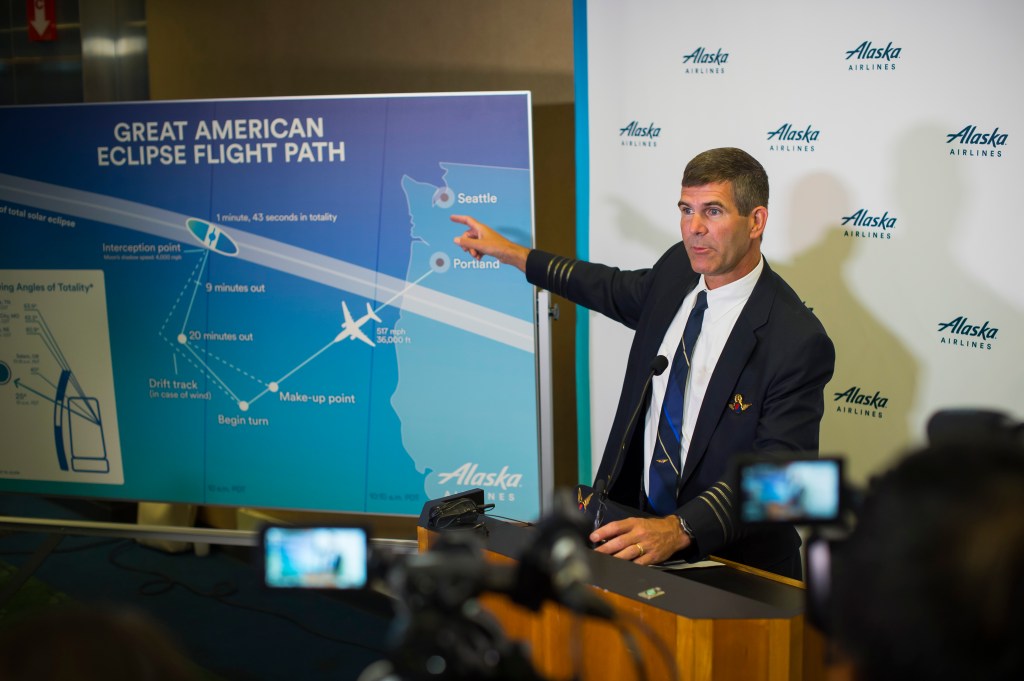
“Getting a plane in the shadow is easy,” said Andersen. “That’s not the problem. We know the path the eclipse is going to follow – all you have to do is fly along and let the eclipse hit you. That’s all well and good in the cockpit, but if you’re a guest looking out the side window, you just see it get dark outside and then light again. You miss the whole show.”
The flight would have to catch the eclipse with the sun low in the sky for guests to see the celestial mechanics at work. How low is low? To find their answer, the team measured the 737’s cabin, and the dimensions and placement of the windows on a Boeing 737-900ER. They then estimated the average guest’s seated eye level and the distance from the windows to find the optimal viewing angle. Long story short, the flight needed to catch the sun at an angle of less than 30 degrees above the horizon.
Part Two: Where does the plane need to be?
Beyond catching the sun at the right level above the horizon, the flight would also need to perfectly time its run across the eclipse’s path, putting the sun directly in guests’ line-of-sight as the eclipse reached totality. It was time to map out the “waypoints” – exactly when and where to put the plane to make the whole plan come together.
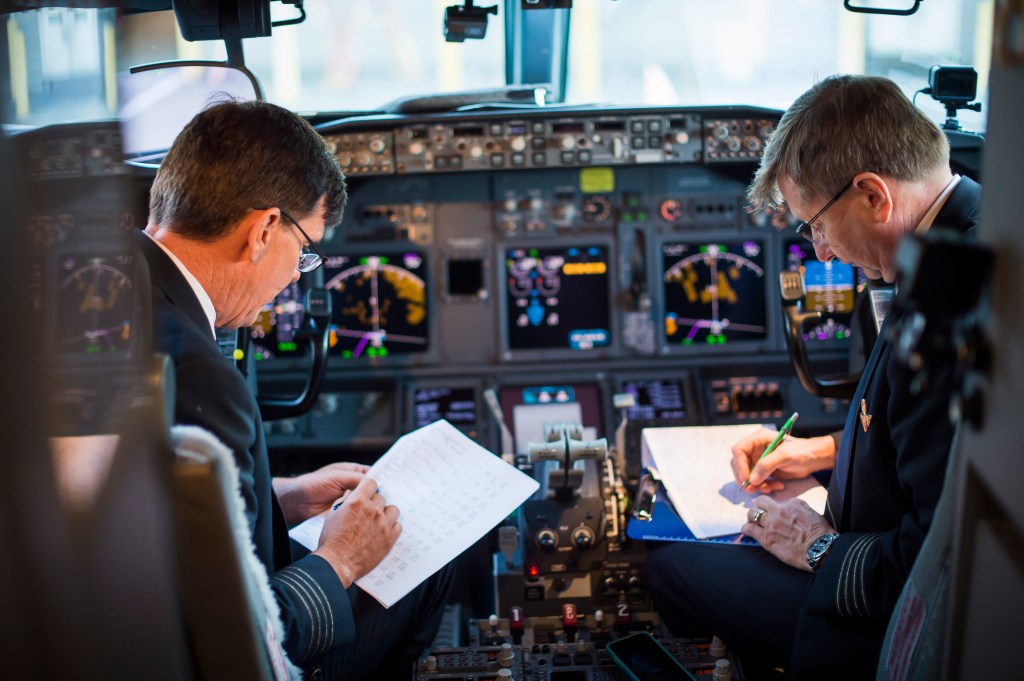
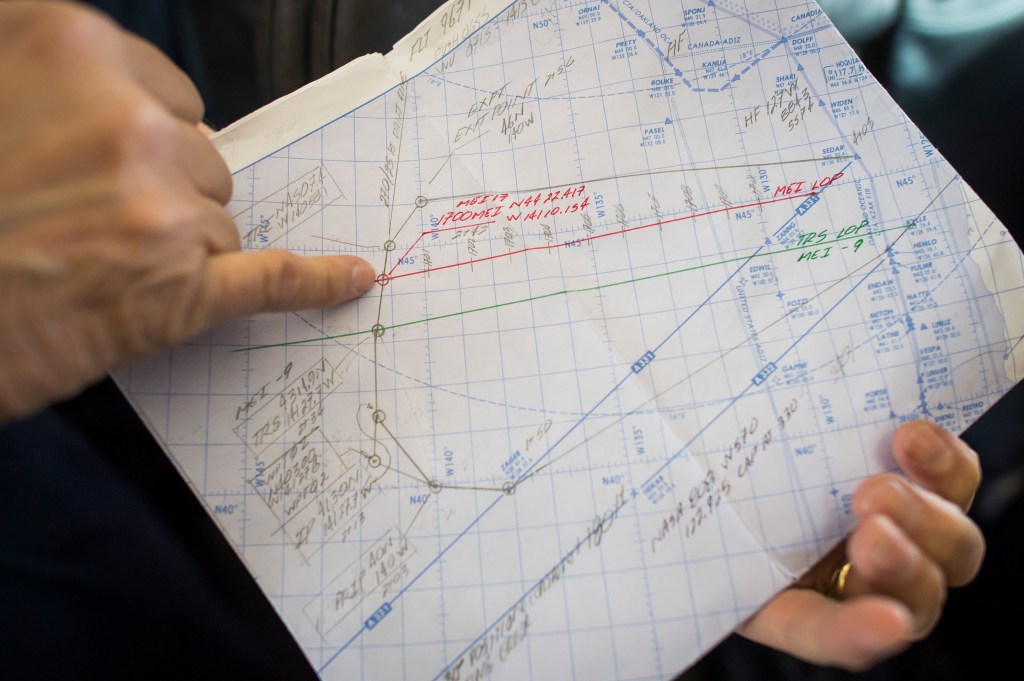
That’s where Schneider took over. By feeding his EFLIGHT program variables including the required viewing angle, estimated aircraft speed, cruising altitude, anticipated wind speeds and more, the program produced three key waypoints and the precise times to hit them to view the eclipse.

According to Schneider, identifying those points is the easy part. As he nonchalantly puts it, “celestial mechanics are gonna do what they’re gonna do.”
But as it turned out, those points were nowhere near… anywhere. To catch the eclipse at the perfect place and time, Andersen and Holm would have to lead their merry eclipse chase out of Portland to a point a couple of hours off the U.S. west coast, before returning back to where they started. Perhaps Alaska’s longest-ever flight to nowhere.
Before sending the calculations to Alaska, Schneider showed them to fellow umbraphile Joe Rao, Schneider’s co-conspirator in detouring an Alaska flight to catch the 2016 total solar eclipse. Rao said, “they’re never going to go for this. We’re suggesting a five-hour flight. That’s a hell of a lot of jet fuel.”
But, much like Schneider’s celestial mechanics, an unstoppable plan was in motion. In less than 24 hours, Alaska’s leadership gave the OK to make the flight happen. Now it was a matter of planning, preparation and piloting skill.
Part three: How do we hit the waypoints at the right time?
Hitting Schneider’s three waypoints was easier said than done, subject to variables that he calls “ponderables, but unknowables.”
“If you get delayed on the ground or have an unfavorable wind or air traffic control denies you a corridor at the last minute, you’re in trouble,” said Schneider. “You just have to anticipate what the worst case may be and try to plan for it.”

As planning got underway, Captain Andersen outlined the problem to colleagues in football terms. “The eclipse is a pass from Peyton Manning… or Russell Wilson,” he quickly corrected, remembering who he was talking to (one of the perils of a 40-year career spent hopping between cities).
“We have to run down the field and decide exactly when to cut across to make the catch. And we have to do it exactly at the 50-yard line so everyone can see it. And do it facing the photographers so they get a perfect photo op.”
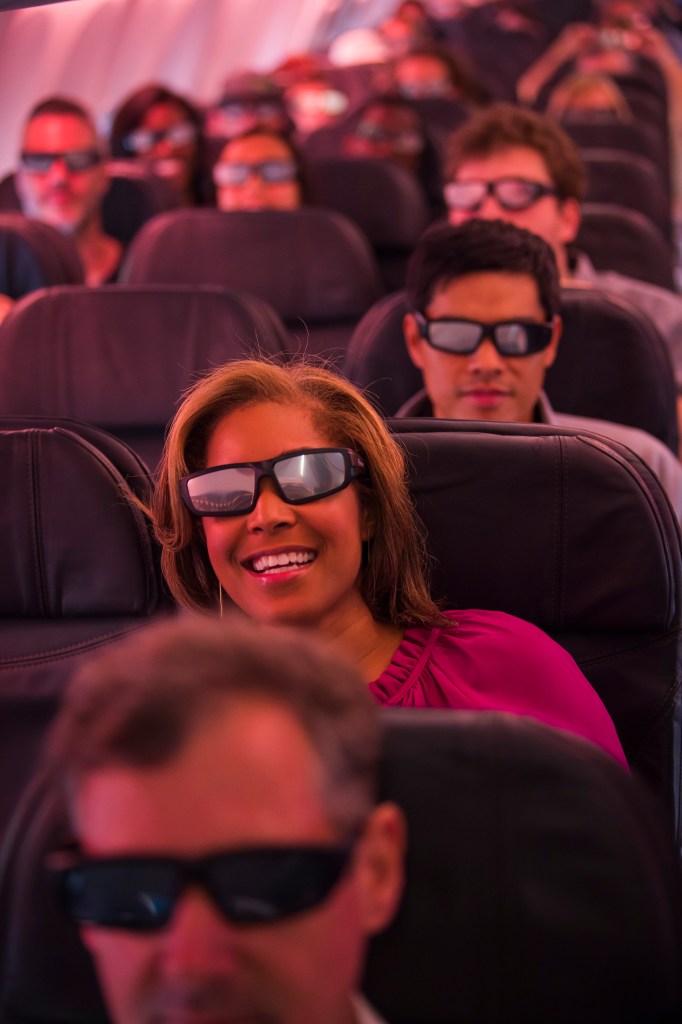
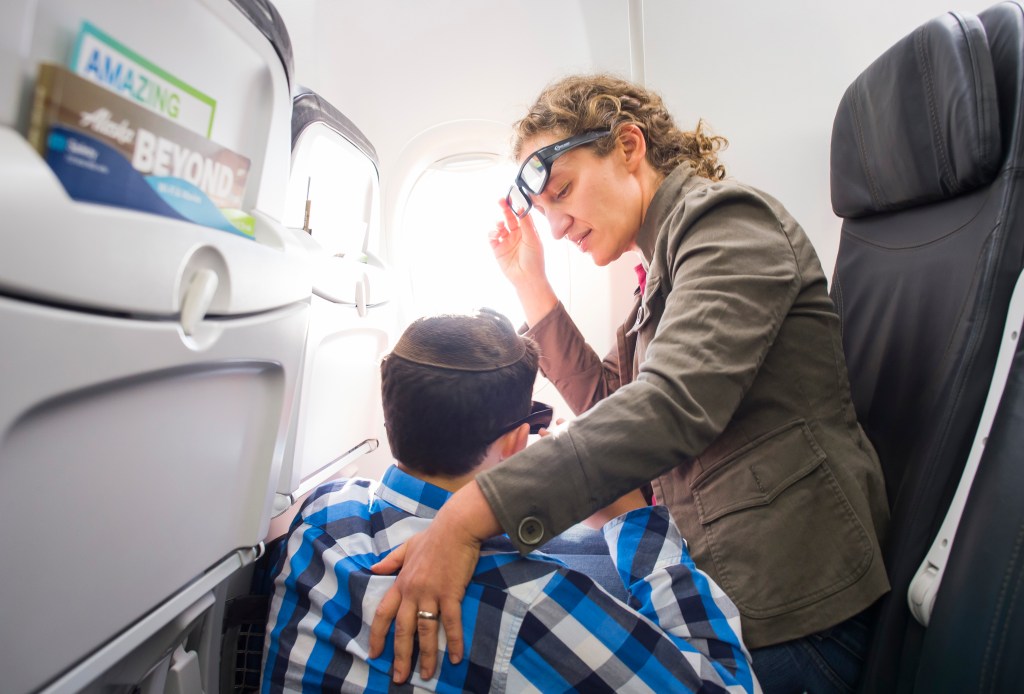
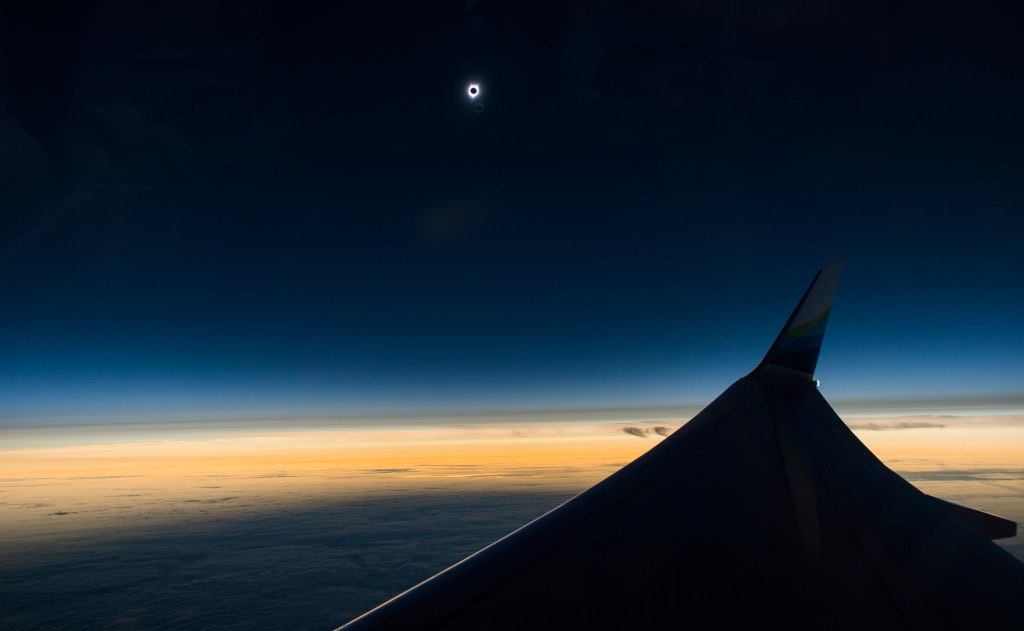
With the moon’s shadow screaming across the globe at thousands of miles per hour, making up for lost time would be almost impossible. So, Andersen and Holm built a make-up point into the flight plan, or a “get well point” as Andersen called it in his days piloting C-130s in the Air Force. In other words, an opportunity to cut the corner on the flight path before hitting Schneider’s eclipse viewing waypoints, closing the gap on a late start of up to five minutes.
“This only helps us if we’re only running a little late,” Andersen reminded his team as they reviewed the flight plan in the weeks leading up to the eclipse, the whiteboard behind him a maze of flight path possibilities. “Every second counts on this.”
If the flight ran more than five minutes behind, Andersen and Holm could attempt to catch the eclipse later in its journey as it neared the coast. The sun would be higher in the sky, negating the hard work to hit the perfect viewing angle, but allowing another few minutes of vital wiggle room.
And wiggle room is important when it means the difference between the experience of a lifetime and long, uncomfortable flight back to Portland with a planeload of very grumpy umbraphiles.
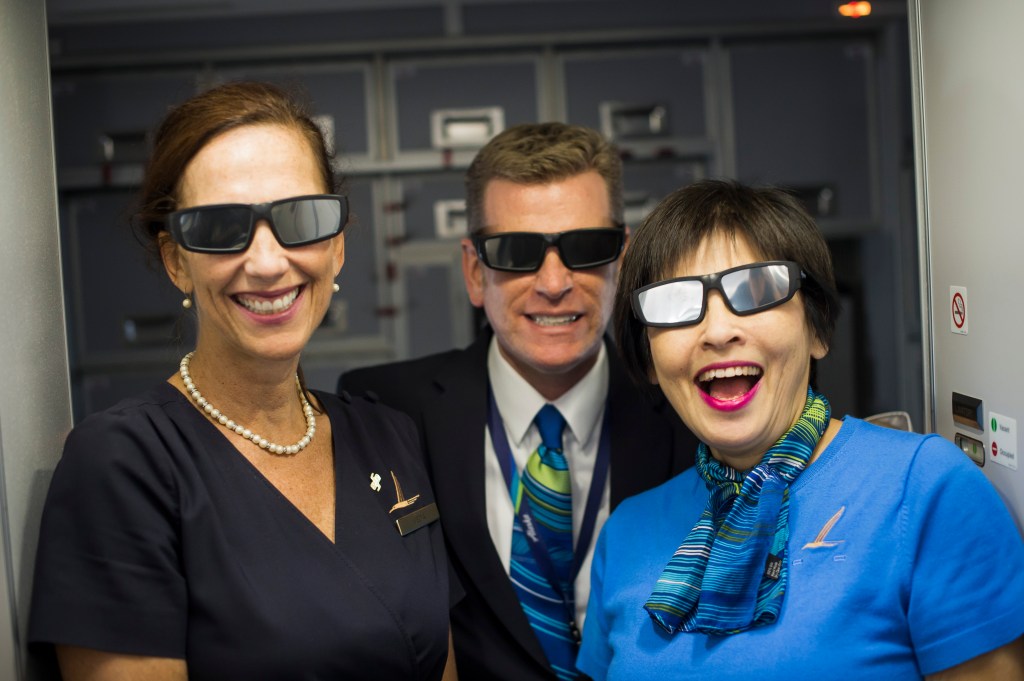
Putting it all together
As a guest on the flight, you’d never guess at the hundreds of emails, calculations, charts and contingency plans that transformed the Great American Eclipse Flight from a wild idea into a workable plan.

Unlike the usual flight’s mix of nappers, readers and phone fiddlers, guests buzzed with anticipation. Cheers erupted the moment the flight lifted off. When the fasten seatbelt sign went dark, the party started. Guests filled the aisle, reminiscing about past eclipse adventures, chatting with media, and collecting autographs from high-profile guests like NASA Astronaut Dr. Michael R. Barratt. Making up for his early pessimism at the five-hour flight plan, Joe Rao held court in row 9, waxing poetic about the views guests could expect as the moon eased in front of the sun.
The mood on the flight deck was a little different, more like frenetic kitchen staff working behind closed doors to serve a seven-course masterpiece. A steady stream of course corrections, wind calculations and communications with Oceanic Air Traffic Control. Despite the pressure, Andersen hopped on the PA to sing a few bars of Europe’s “The Final Countdown” while guests led by Rao shouted “TEN! NINE! EIGHT!” from the cabin. Seasoned umbraphiles and first-timers alike pressed their noses to the glass, ravenous for a 103 second glimpse of totality that had been months in the making.
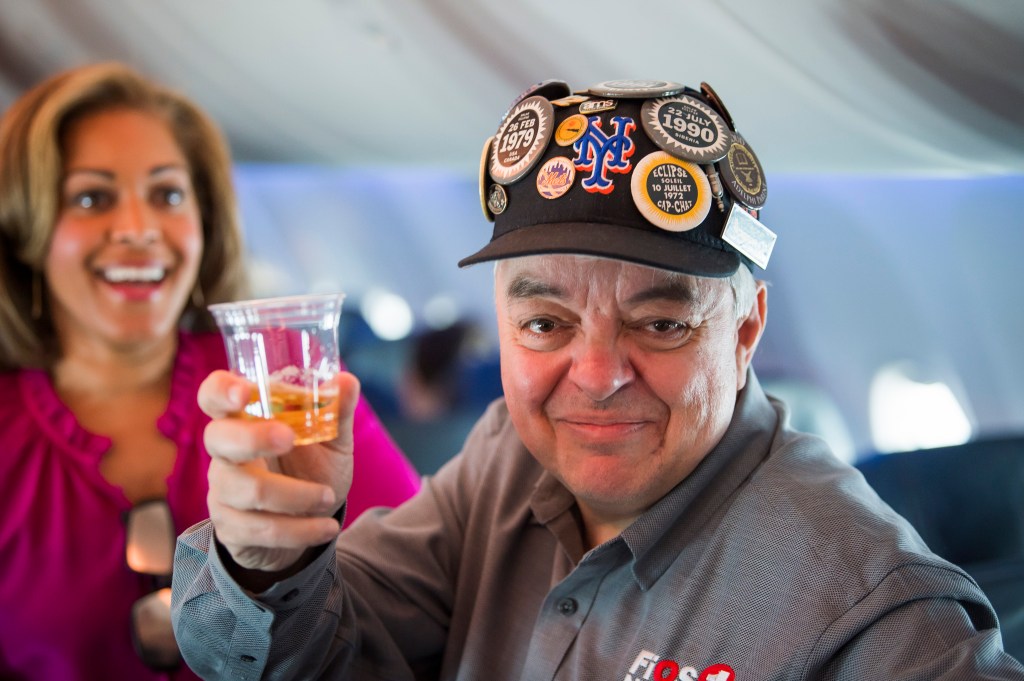

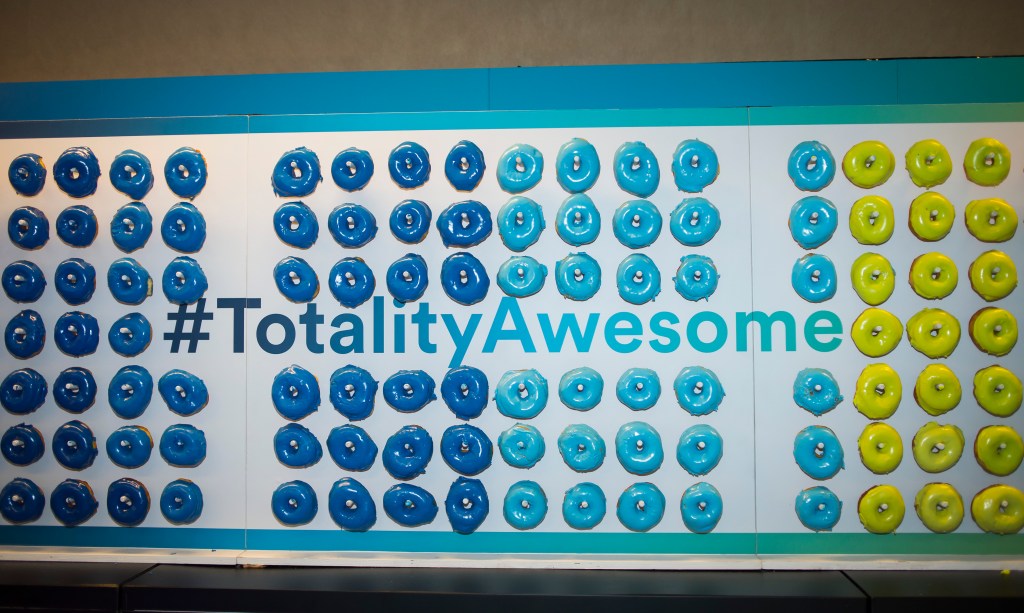
And just like that, the moment was over. Sun and moon continuing on their way toward the coast, leaving behind an awestruck cast of eclipse chasers eager to touchdown in Portland and share their adventure with the world.
They landed back where they’d started five hours earlier, but with a memory to last a lifetime. Nearly two minutes in the totality of a solar eclipse at 38,000 feet. A moment free of clouds and haze, only the thinnest of atmosphere between them and a phenomenon that has been equal parts feared, celebrated and honored throughout human history.
